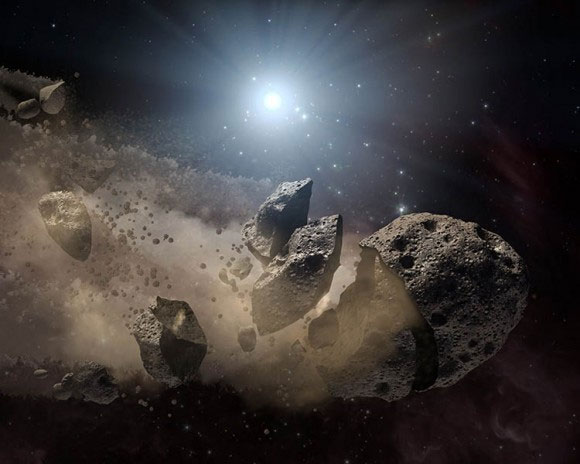Discover the astonishment of the planet's formation
Based on the support of the ALMA telescope, world astronomers have just announced a new discovery that could change every theory so far about the formation of planets, including the Left land.
In the solar system, in addition to Earth, there are 3 planets including many other rocky stars such as Mercury, Venus and Mars. These planets all have a hard surface with heavy metal cores. Meanwhile, other very large planets, such as Jupiter or Saturn, are essentially giant gas spheres.
The new finding suggests that in the universe the planets with a rocky surface may be more popular than people once thought. The research has just been presented in the November 30 issue of the Astrophysical Journal of Letters .

A dwarf star in the universe
By using the world's most modern telescope ALMA placed on a 5,000m high mountain in Chile, astronomers closely watched a brown dwarf named ISO-Oph 102 . This is a star-like object but due to its small size, it cannot shine.
According to a long-recognized theory, planets with a rocky surface are made up of random collisions of microscopic debris in the disk of physical dust that exists around a star. These debris, like soot, stick together and grow.
Scientists believe that the appearance of dwarfs has a different structure. They believed that the debris could not stick together because the disks were very thin and sparse. In addition, the debris often moves at too high a speed so it cannot stick together before colliding.
But with the disk of material dust around ISO-Oph 102 dwarfs, astronomers found materials that, at least according to them, are quite large. These are particles a few millimeters in size.
'Hard dust particles of that size should not be able to form in low temperature areas outside the dwarf disk of dwarfs. But the truth seems that they are still forming , "said Luca Ricci, a scientist from the California Institute of Technology and a group of astronomers from the US, Europe and Chile.
'We are not sure whether a planet with a rocky surface will be able to form there, or have formed, but we are seeing the first steps. So we will have to change our assumptions about the necessary conditions for the solid blocks to grow up, ' Ricci assured.
- Discover more 18 large planets
- Discover 9 new planets
- The first clear picture of planet formation
- Young alien planet promises to decode the formation of planets
- Discover the secret of Mercury formation
- Discover a new planet 13 times larger than Jupiter
- Discover an asteroid outside the Solar System
- The planet is 2,500 times larger than Earth
- Discover a planet forming around two stars
- Learn the formation of the planet through
- The process of forming giant planets in the universe
- Discover more than 700 planets outside the solar system
 Van Allen's belt and evidence that the Apollo 11 mission to the Moon was myth
Van Allen's belt and evidence that the Apollo 11 mission to the Moon was myth The levels of civilization in the universe (Kardashev scale)
The levels of civilization in the universe (Kardashev scale) Today Mars, the sun and the Earth are aligned
Today Mars, the sun and the Earth are aligned The Amazon owner announced a secret plan to build a space base for thousands of people
The Amazon owner announced a secret plan to build a space base for thousands of people Chilling discovery of cosmic object that almost brought the Earth to 'apocalypse'
Chilling discovery of cosmic object that almost brought the Earth to 'apocalypse'  Admire 7 planets in the Solar System appearing at the same time in the night sky
Admire 7 planets in the Solar System appearing at the same time in the night sky  Does the Solar System have 5 more planets similar to Earth?
Does the Solar System have 5 more planets similar to Earth?  New discovery: 7 Earth-like planets that could be habitable
New discovery: 7 Earth-like planets that could be habitable  6 habitable planets discovered at the same time
6 habitable planets discovered at the same time  Strange Phenomenon: Why Are Planets 'Running Away' From the Sun Despite Their Extremely Strong Gravitational Force?
Strange Phenomenon: Why Are Planets 'Running Away' From the Sun Despite Their Extremely Strong Gravitational Force? 